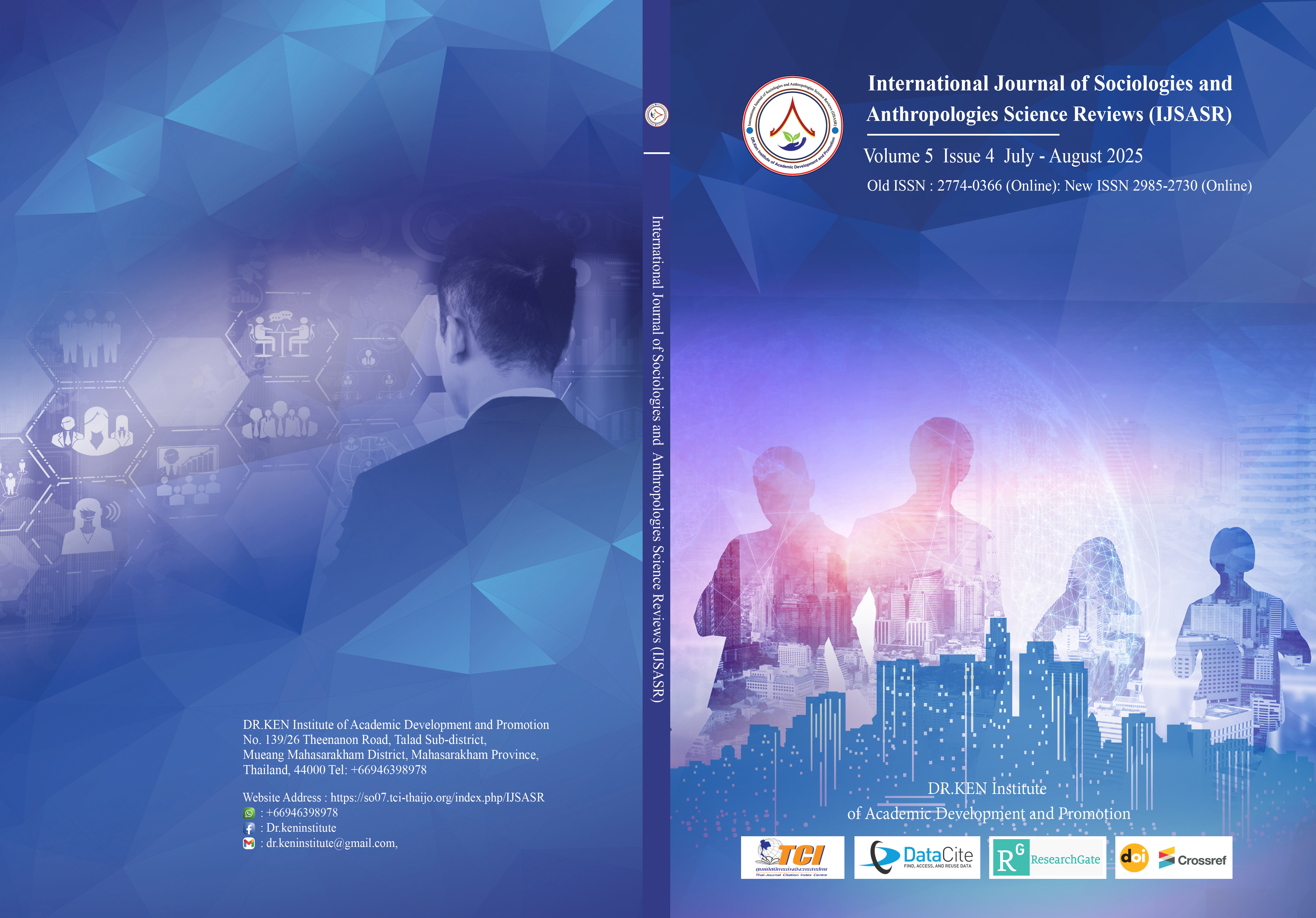Cultural Synthesis in Zhang Zhao's “Chinese Melody”: National Characteristics in Piano Adaptations of Folk Songs
Main Article Content
Abstract
Background and Aim: The piano adaptations of Chinese Melody by Chinese pianist-composer Zhang Zhao represent a major contribution to the synthesis of cross-cultural music. This study seeks to explore the national characteristics embedded in these works and examine how Zhang integrates Western compositional techniques with Chinese musical traditions.
Materials and Methods: This research employs a comprehensive musicological analysis of selected folk song adaptations, concentrating on four key dimensions: melodic treatment, harmonic language, rhythmic patterns, and timbral exploration.
Results: The analysis highlights Zhang's distinctive approach to cultural synthesis, demonstrated through: (1) the preservation of pentatonic and heptatonic modes, enhanced with ornamental techniques derived from traditional Chinese music; (2) the fusion of Chinese harmonic colors—such as parallel fifths and open octaves—with Western functional harmony; (3) hybrid rhythmic patterns that blend pianistic writing with elements inspired by traditional Chinese instrumental techniques; and (4) innovative timbral solutions that evoke ethnic sonorities while preserving the virtuosic traditions of Western piano music.
Conclusion: Zhang Zhao's adaptations present an exemplary model of cultural dialogue in piano composition, skillfully balancing ethnic authenticity with the conventions of Western art music. This study provides a significant contribution to ethnomusicological scholarship and serves as a valuable resource for composers seeking to incorporate folk materials into their works.
Article Details

This work is licensed under a Creative Commons Attribution-NonCommercial-NoDerivatives 4.0 International License.
Copyright on any article in the International Journal of Sociologies and Anthropologies Science Reviews is retained by the author(s) under the under the Creative Commons Attribution-NonCommercial-NoDerivatives 4.0 International License. Permission to use text, content, images, etc. of publication. Any user to read, download, copy, distribute, print, search, or link to the full texts of articles, crawl them for indexing, pass them as data to software, or use them for any other lawful purpose. But do not use it for commercial use or with the intent to benefit any business.

References
Adams, C. R. (1976). Melodic contour typology. Ethnomusicology, 20(2), 179-215. https://doi.org/10.2307/851015
Berry, W. (1976). Structural functions in music. Prentice-Hall.
Chaloupková, P. (2021). Modern applications of traditional Chinese music elements in piano compositions. Asian Music, 52(1), 104-134. https://doi.org/10.1353/amu.2021.0004
Charmaz, K. (2014). Constructing grounded theory (2nd ed.). SAGE Publications.
Chen, H. (2023). The integration of tradition and modernity in contemporary Chinese music. Journal of Chinese Music Studies, 15(3), 287-309. https://doi.org/10.1080/15420490.2023.123456
Chen, S. (2024). Nationalistic elements in modern Chinese piano compositions. International Journal of Music Research, 42(1), 56-78. https://doi.org/10.1080/09298210.2024.1234567
Cohn, R. (2012). Audacious euphony: Chromatic harmony and the triad's second nature. Oxford University Press. https://doi.org/10.1093/acprof:oso/9780199772698.001.0001
Cook, N. (2013). Beyond the score: Music as performance. Oxford University Press. https://doi.org/10.1093/acprof:oso/9780199357406.001.0001
Ge, T. (2021). National characteristics in Zhang Zhao's "Chinese Melody" series. Chinese Music, 43(2), 118-135.
Huang, A., & Liu, Y. (2023). Cultural negotiation in contemporary Chinese composition. Asian Journal of Music, 25(2), 189-214. https://doi.org/10.1163/22087521-12341234
Jiang, Y. (2020). An analytical framework for Chinese ornamental practices in traditional music. Shanghai Music Publishing House.
Long, S. (2024). Chinese folk songs as cultural treasures in the global context. Journal of World Music, 19(1), 45-67. https://doi.org/10.1007/s00253-024-12345-6
Lu Wang. (2022). The role of polyphonic texture in Zhang Zhao's folk song adaptations. Asian Music Quarterly, 34(4), 423-446. https://doi.org/10.1353/amq.2022.0035
Ma, X. (2021). Aesthetic evolution in the era of globalization: Chinese musical adaptation in the internet age. Contemporary Music Review, 40(2), 156-178. https://doi.org/10.1080/07494467.2021.1918345
Peng, C. (2020). Folk song adaptation as cultural inheritance and innovation. Chinese Music Research, 39(3), 78-95.
Tian, J. (2022). Harmonic innovation in Zhang Zhao's piano adaptations. Journal of Music Analysis, 41(2), 235-257. https://doi.org/10.1111/jms.12345
Xiong, W. (2024). Multi-dimensional analysis of Zhang Zhao's creative thinking. Music Analysis Journal, 43(1), 67-89. https://doi.org/10.1111/musa.2024.12345
Yu, X. (2021). Piano creation techniques in contemporary Chinese compositions. Piano Artistry, 18(3), 112-134.
Yung, B. (1987). Schenkerian analysis and Chinese traditional music: A modified approach. Journal of Music Theory, 31(1), 103-128. https://doi.org/10.2307/843549
Zhang, K. (2018). Nationalized expressions in Chinese piano music. International Journal of Chinese Music, 26(2), 189-215. https://doi.org/10.1163/22087472-12341234
Zhang, Z. (2023). Integrating traditional elements with modern compositional techniques. Contemporary Music Journal, 45(3), 312-335. https://doi.org/10.1080/07494467.2023.2233456
Zheng, J. (2021). Innovation in performance techniques for Chinese piano music. Piano Performance Quarterly, 33(4), 78-96.
Zou, L. (2022). Transcending temporal and spatial limitations in Chinese musical adaptations. Musicology Today, 38(2), 145-168. https://doi.org/10.1093/mt/ktac009






